By now we all know about ATF’s proposed “Objective Factors” document by which the agency intends to determine the classification — pistol or short barreled rifle — of a stabilizer brace-equipped pistol. Also by now I hope we have all left a public comment as well as contacted the White House and our representatives to make our opinions heard.
With that done, let’s take a deep dive into each “objective factor” listed in ATF’s draft guidance document to see how they hold up under scrutiny. I think we’ll find that, rather than being “objective,” each factor is objectively subjective. They are so vague, in fact, that it provides the opposite of any sort of guidance and assures nothing but fear, uncertainty, and doubt among the firearm industry and consumers and effectively gives ATF carte blanche to enforce “violations” however it chooses.
Perhaps worse, or at least most insulting, much of the alleged guidance found in the document contradicts ATF’s own rulings and practices, past and current.
While I can’t envision much of any of this holding up in court — ATF’s track record on pistol brace-related prosecutions thus far is 0-1 — none of us wants or can afford to be the test case. Should it comes to pass, though, here are some arguments refuting each and every one of ATF’s proposed determining factors for brace-equipped firearm classification.
All quotes below unless otherwise cited are directly from ATF’s draft “Objective Factors for Classifying Weapons with Stabilizing Braces” document. Any emphasis in said quotes (bold lettering) was added by me:
The GCA and NFA generally regulate “firearms” and not individual components and, as such, ATF does not classify unregulated components or accessories alone.
This is an intentionally misleading statement. ATF has classified all sorts of components and accessories on their own (as it must), such as trigger cranks, binary triggers, lightning links, bump stocks, muzzle devices, forward grips, the Auto Glove, naughty rubber bands, naughty shoe strings, naughty coat hangers, solvent traps, 80% receiver kits, thread adapters, and so much more.
If ATF didn’t classify accessories, then how does it explain its public notice from December, 2018 in which it informed the nation of its brand new change in policy whereby it would, effective on that very date, no longer classify an accessory unless it is installed on a complete firearm?
Furthermore, how is this practical or in any way tenable? Is ATF seriously suggesting that f I want it to make a determination on the use of an angled forward grip on a pistol (by way of one example for which ATF ruled in a categorical fashion in the past) I have to submit it installed on a specific firearm and their ruling will only apply to that one, specific model and its complete, specific configuration to include choice of optics and literally everything else?
This is impossible and it makes no sense.
The ATF must make determinations on firearms and on accessories. This is the only way the industry and the consumer can know whether or not they are following the law. “This firearm is a pistol,” and “this accessory does not change the classification of a pistol.” Boom, done.
Accordingly, ATF must evaluate whether a particular firearm configured with a stabilizing brace bears the objective features of a firearm designed and intended to be fired from the shoulder, and thus subject to the NFA, on a case-by-case basis.
An “each one of you has to show us your complete configuration and then we’ll determine if you’re a felon or not based on vaguely-defined guidelines” is not how things work in the United States of America.
In fact, the United States Constitution holds that vagueness in the law is a violation of due process.
Likewise, the rule of strict construction holds that U.S. courts must hold in the favor of the defendant and against the government in any case involving unclear or ambiguous law.
…the purpose of the NFA is “to regulate certain weapons likely to be used for criminal purposes,” United States v. Thompson/Center Arms Co., 504 U.S. 505, 517 (1992)…
T/C won that case in front of the Supreme Court, by the way. Playing a big part in T/C’s win was the rule of strict construction mentioned above.
Anyway, all known data proves beyond any shadow of a doubt that stabilizing brace-equipped pistols are not likely to be used for criminal purposes. With at least six million of them in private hands, there has been one (1) known criminal act committed with such a firearm over the last eight or more years.
Furthermore, if ATF’s assertion is that some portion of brace-equipped firearms are actually SBRs — short barreled rifles — we have even more data that show SBRs are not likely to be used for criminal purposes. State and federal crime data for decades has show that rifles of all types are used in approximately three percent of murders and that about 1.3% of armed criminals are armed with any sort of rifle.
Short barreled rifles, being a tiny little fraction of the “rifles” category (yet legally owned by well over 400,000 Americans and only a hacksaw away from use by any criminal), are patently not likely to be used for criminal purposes and the data very clearly bear this out.
For those who like to point to other countries as enlightened examples of what the U.S. should do or consider, allow me to note that we are the only country in the world — despite the vast majority of other “Western” countries having stricter gun control laws — to regulate rifles based on barrel length. The 1934 NFA law that created these restrictions is antiquated, irrelevant, and proven to be unnecessary.
Instead of adding braced pistols to the NFA, we should remove SBRs from it. It’s possible, too. This time last year H.R. 5289, which would have done just that, was introduced in the House. That bill was referred to multiple committees, and received 25 co-sponsors.
Let’s keep pushing. This is the permanent solution to ATF’s continued rogue actions to undermine the firearm industry, gun ownership, and the Second Amendment writ large.
Type and Caliber. The type and caliber of the firearm to which the stabilizing brace or similar item is installed. A large caliber firearm that is impractical to fire with one hand because of recoil or other factors, even with an arm brace, is likely to be considered a rifle or shotgun.
Um . . . what? Get out of here with your “impractical” “large caliber” noise. I’ll determine what’s practical for me to fire, thank you very much. And I assure you it’s very different from what I determine is practical for my eight-year-old daughter to fire, which is different from what was practical when she was six.
Is the ATF seriously suggesting that this is an “objective factor?” What a farce. Does it believe that equal protection under the law could possibly apply should it attempt to prosecute a woman differently from a man, or a disabled person differently from a non-disabled person, based on what the ATF suggests is a “large caliber” or “impractical” for that person?
This is a perfect example of a vague and entirely undefined rule. “Objective” would be setting a ft-lbs of energy limit (e.g. a “pistol” may not fire a cartridge exceeding 1,000 ft-lbs of muzzle energy. To be clear I’d fight something like that tooth-and-nail, but that’s what an objective rule would look like). Intentionally vague, fear-inducing BS is the ATF’s proposed “objective factor” quoted above.
Regardless of whether it’s an objective factor or a vague, unconstitutional mess, I don’t recall anything about practicality appearing in the Second Amendment.
Is this a large caliber firearm that is impractical?
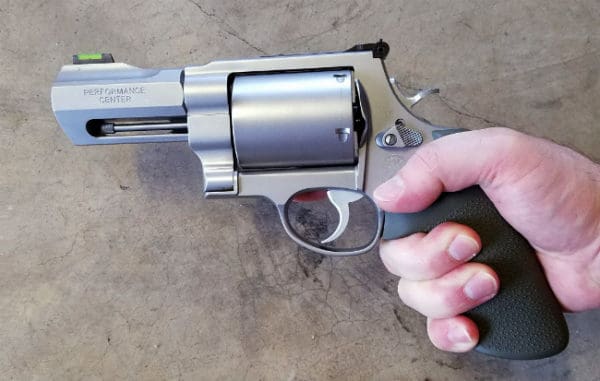
Or this?
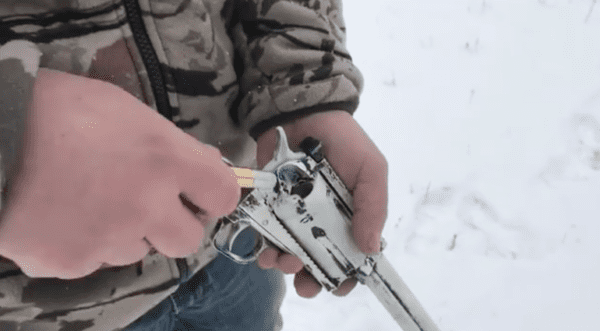
Or this?
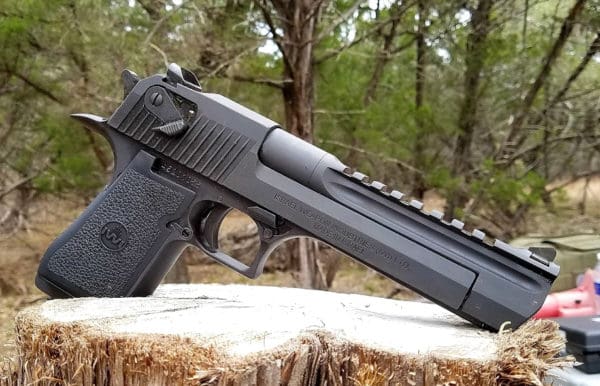
How about this?:
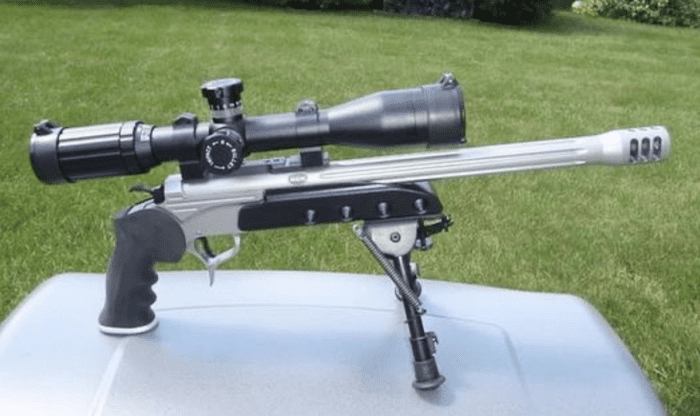
Are these pistols now considered rifles because we can assume the ATF believes they fire a too-large caliber and/or are impractical to fire with one hand? No, no I didn’t think so.
Oh, it takes the installation of a stabilizing brace for ATF to consider these rifles? That makes no sense. Per ATF’s own admission in the bold text in the quote above and in the quote below, it fully understands that a pistol stabilizing brace assists in the safe, controllable use of a pistol precisely like the ones it claims are somehow acceptable to use without a brace but unacceptable to use with one:
In recent years, some manufacturers have produced and sold devices designed to be attached to large and/or heavy pistols which are marketed to help a shooter “stabilize” his or her arm to support single-handed fire (“braces”). ATF was advised by the first manufacturer to submit an arm brace for classification that the intent of the arm brace was to facilitate one-handed firing of the AR15 pistol for those with limited strength or mobility due to a handicap, and to reduce bruising to the forearm when firing with one hand. According to this manufacturer, the brace concept was inspired by the needs of disabled combat veterans who still enjoy recreational shooting but could not reliably control heavy pistols without assistance. Consequently, ATF agrees that there are legitimate uses for certain “stabilizing braces.”
ATF agrees that improving the shooter’s control of heavy pistols is a valid concern and was paramount to its original approval of the pistol stabilizing brace.
In the “Type and Caliber” quote above (above the photos of large handguns), ATF not only describes precisely the sort of firearm for which stabilizing braces make perhaps the most sense, it states as much in that very quote when it says “…even with an arm brace…”. This is tacit admission that arm braces improve the stability and control and, therefore, practicality of “large caliber” handguns.
Okay, onto the “objective factors” list now:
Weight and Length. The weight and length of the firearm used with the stabilizing brace. A firearm that is so heavy that it is impractical to fire or aim with one hand, or so long that it is difficult to balance the firearm to fire with one hand, is likely to be considered a rifle or shotgun.
First, ditto everything above. Everything I said related to type and caliber applies in identical fashion to weight and length.
But let’s now look at two aspects of federal law. First, what is a “pistol,” anyway?
Pistol. A weapon originally designed, made, and intended to fire a projectile (bullet) from one or more barrels when held in one hand, and having (a) a chamber(s) as an integral part(s) of, or permanently aligned with, the bore(s); and (b) a short stock designed to be gripped by one hand and at an angle to and extending below the line of the bore(s).
Revolvers, for the record, are later defined as a subset of the pistol category with a rotating, chambered cylinder.
The definition above is from the 1934 National Firearms Act. There have been some minor re-writings since (1968 Gun Control Act), but I quoted the NFA to point out that we have now defined pistols as guns designed to be fired when held in one hand for 86 years.
Aspect one: nowhere in the definition of “pistol” is any mention of weight or length. Sorry, but ATF does not get to invent restrictions in the law that do not exist. If I want to shoot a pistol with a one-meter-long barrel (and I have) I’m fully within my legal rights to do so, and for no reason whatsoever does it depart from the definition of “pistol.”
Aspect two: This is just stupid. No one teaches one-handed pistol shooting anymore (outside of competitions where one-handed shooting is part of the game or as a plan B due to injury or extreme proximity to one’s target). No one has since the 70’s.
Every law enforcement and military organization plus defensive and competitive shooters and trainers for all of these groups began phasing out the entire concept of operating handguns one-handed beginning in the late 50’s when the Weaver stance was developed.
Including the ATF:


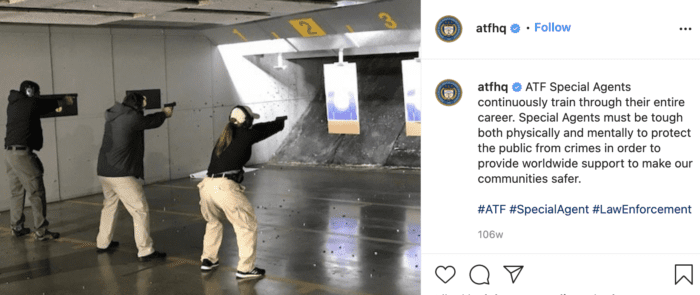

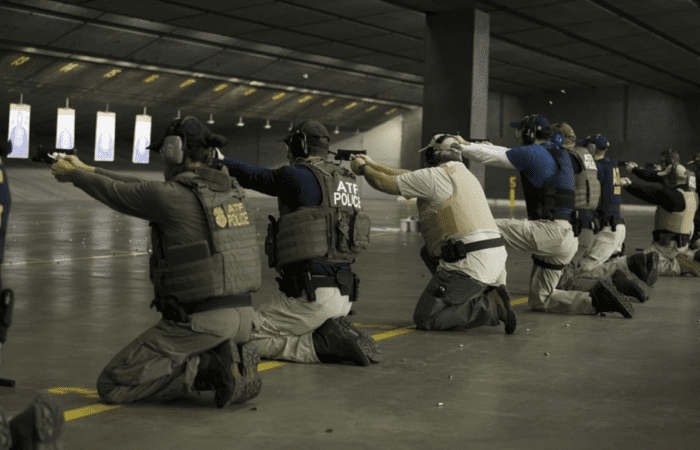

All photos above are from ATF’s Instagram feed. Incidentally, if you’re looking for a good time I highly recommend reading the comments on practically any photo whatsoever in the agency’s feed, but particularly any photo containing a dog or a fire.
Is ATF in violation of remanufacturing these pistols into SBRs because they were purchased with the clear intent of firing them with two hands? I think not. But since intent is apparently all that seems to matter to ATF, perhaps it should prosecute its agents and armorers.
At any rate, pretending to regulate handguns based on this entirely outdated definition is absurd on its face. Looking at precedent, ATF absolutely does not and has not regularly regulated handguns based on this definition.
For instance, a pistol is still a pistol even if it has a squared-off trigger guard with serrations specifically designed to provide purchase for the shooter’s support hand. A pistol is still a pistol after the addition of an AFG, or Angled Forward Grip, which ATF determined are not forward grips despite the fact that they are, in fact, very obviously forward grips. A pistol is still a pistol if it has a handguard, which I think we understand is thusly yclept due to, you know, the expectation that it’s gripped by one’s hand in order to operate a pistol two-handed.
No one shoots a pistol one-handed anymore, including ATF, and the idea that it’s acceptable to craft determinations, rules, and laws around this outdated, absurd concept is so stupid on its face that it’s entirely ignored by ATF except when it feels like using it to further even more absurd restrictions on our rights.
Length of Pull. The “length of pull” refers to the distance from the trigger to the point at which a stock meets the shoulder. This is a measurement for rifles and shotguns used to accommodate shooters of different sizes. Because an arm brace need only reach the forearm, the distance between the trigger and the back of the brace is generally expected to be shorter than the distance between the trigger and the back of a stock on a weapon designed and intended to be fired from the shoulder. This measurement is not necessarily determinative of the intent of the manufacturer but is used in making an evaluation of the firearm. If a brace is of a length that makes it impractical to attach to the shooter’s wrist or forearm, then that may demonstrate that it is not designed as a brace but rather for shoulder fire.
I just love to see words like “generally” and “not necessarily” and “may” used in objective factors. So much objectiving is happening here I can scarcely handle it.
Harder to handle is ATF using a measurement specific to shoulder stocks and rifles for defining pistol braces. It’s almost as if the agency was presuming that braces are stocks even before kicking off this “objective factors” endeavor. Using the term “length of pull” is prejudicial from the outset.
Furthermore, ATF has previously held that holding a pistol stabilizing brace or a pistol itself against one’s bicep, sternum, chin, cheek, or a shooting bench / the ground, etc. is perfectly legal — only the dreaded shoulder is a no-no. The assertion that a “length of pull” different from what is required to “only reach the forearm” is overly restrictive under ATF’s previous guidance.
As before, this also presents an impossible scenario for firearm and accessory manufacturers, retailers, and gun owners. A subjective “measurement” that will vary for each and every shooter makes it impossible to manufacture, sell, or own a product that can be deemed either legal or illegal.
What if a gun shop sells a firearm with a brace that’s “too long” for one customer but okay for another customer? What if I want my wife or eight-year-old daughter to shoot my brace-equipped pistol?
Is ATF seriously telling us that it’s going to prosecute cool dude and gun guy Sammy the Dwarf for possessing the exact same firearm that I can legally own, but he can’t? Yeah, good luck with that cough Americans With Disabilities Act cough Equal Protection Clause cough.
Prior to this proffered “Objective Factors” document, ATF has been using an actual objective factor of a 13.5-inch length of pull maximum. Unfortunately this was an entirely unpublished and secret metric which ATF planned on enforcing as it saw it. In fact, ATF attempted to prosecute based on this arbitrarily invented, never-before-publicized metric and lost, in part due to the fact that the defendant had no reasonable way of knowing about this “restriction.”
There’s even Supreme Court precedent stating that laws must be made public or, if they aren’t, they are generally unenforceable.
Attachment Method. The method of attachment of the stabilizing brace, to include modified stock attachments, extended receiver extensions, and the use of spacers. These items extend the distance between the trigger and the part of the weapon that contacts the shooter, whether it is a stock or a stabilizing brace. Use of these items indicates that the weapon is designed and intended to be fired from the shoulder because they extend a stabilizing brace beyond a point that is useful for something other than shoulder support.
None of this matters or makes any sense. It’s redundant to the previous section on “length of pull.” Clearly the intent here isn’t that spacers are inherently bad, rather it’s the same concept that a long length of pull — whatever that means — removes a stabilizing brace from functionality as a brace and into functionality as a stock.
We also know that this isn’t likely to be about compatibility with components that also accept rifle stocks or an implication that pistol stabilizing braces cannot be adjustable for length. We know this because ATF has specifically approved multiple length-adjustable braces that mount on standard AR-15 receiver extensions (buffer tubes).
There are also many shoulder stocks on the market with extremely short lengths of pull for nearly every type of rifle (example). Whether intended for youth shooters, Sammy the Dwarf, or PDW / CQB type use, the suggestion that mounting a brace via a modified stock attachment necessarily negates its functionality as a brace is entirely farcical.
In this next segment, due to the bulleted list, I’m going to write my brief replies in bold blue and in-line with the ATF’s text:
Stabilizing Brace Design Features. The objective design features of the attached stabilizing brace itself are relevant to the classification of the assembled weapon, and include:
- The comparative function of the attachment when utilized as a stabilizing brace compared to its alternate use as a shouldering device;
How on earth could this be quantified? There is simply no objective metric by which to determine how well a pistol brace behaves as a pistol brace compared to how well it may behave as a shouldering device. And for whom? And again I cite my wrench example: even if my old wrench is warped and stripped out and now functions better as a hammer than it does as a wrench, it’s still a dang wrench.- The design of the stabilizing brace compared to known shoulder stock designs;
Which aspect of its design? Size, weight, aesthetics, its silhouette, how and from what materials it’s manufactured? Effectively every stabilizing brace ATF has ever approved, including the very first one, has been modeled to approximate the aesthetics of known shoulder stock designs. Beyond this issue, are we talking about a 30% similarity or a 75% similarity, or at what point is ATF suggesting there’s some sort of issue here and how the heck could this be quantified objectively? At what point does my self portrait compare too closely to the Mona Lisa for ATF’s liking?- The amount of rear contact surface area of the stabilizing brace that can be used in shouldering the weapon as compared to the surface area necessary for use as a stabilizing brace;
What’s necessary? What’s too much? Please quantify this. We’ll accept square inches of material within 15 degrees of vertical as a unit of measurement.- The material used to make the attachment that indicates whether the brace is designed and intended to be pressed against the shoulder for support, or actually used on the arm;
Could this be any more vague? (Please read that in a Chandler voice). What about the material? Is there some sort of guidance intended here? Too soft, too hard, attracts a magnet, is non-Newtonian, is black, is shiny, is lumpy, is an illegal substance? What is an approved material for a brace that isn’t appropriate for a stock? At minimum, to this point ATF has approved braces made of rubber, polymer, and aluminum. These are all common materials for shoulder stocks.- Any shared or interchangeable parts with known shoulder stocks;
Bull. This has never been implied by ATF previously, nor has it taken anything of the sort into any of its past stabilizing brace determinations. In fact, quite the opposite in that ATF has approved braces that specifically and explicitly employ shoulder stock components (e.g. SB Tactical SBA3, Gear Head Works Tailhook Mod 2, etc). Additionally, this factor is far too broad and makes little sense. Any part? Screws, springs, et al? There is zero chance a court would find that any random shared part turns a brace into a stock. ATF would need to get specific here, too.- Any other feature of the brace that improves the weapon’s effectiveness from the shoulder-firing position without providing a corresponding benefit to the effectiveness of the stability and support provided by the brace’s use on the arm.
Same response as the first bullet point.
Which brings us to . . .
Aim Point. Appropriate aim point when utilizing the attachment as a stabilizing brace. If the aim point when using the arm brace attachment results in an upward or downward trajectory that could not accurately hit a target, this may indicate the attachment was not designed as a stabilizing brace.
So far this is as close to a reasonable metric by which to judge the design of a stabilizing brace as we’ve seen. However, circling back to the original purpose of pistol braces — assisting disabled and injured persons in the control of a large format pistol — making assumptions about the physical abilities and, well, “configuration” of such parties is a fool’s errand. We’re right back to rules that apply differently to different people.
Also, there’s no legal requirement that a shooter, you know, aim. It’s perfectly legal to fire from the hip or with one’s eyes closed or whatever-the-heck ever. Yes, yes, we must be safe and we are liable for any damages caused by errant shots, but ATF’s suggestion that there is a singular “aim point” or style of shooting is false.
To beat a dead horse a bit further, I have accurately shot various types of pistols without sights by aligning a point at the top rear of the gun with the tip of the barrel and determining where this places rounds downrange. This is almost always an example of “an upward trajectory” and it absolutely does not mean that one “could not accurately hit a target.”
A shooter with a brace-equipped firearm that results in an apparent upward or downward trajectory, whether due to the alignment of the brace or due to the shooter’s disability, can compensate for said trajectory. Heck, a brace “misalignment” may well compensate for a shooter’s disability and provide a straight trajectory for that user.
Just as one-handed shooting of a pistol is not a requirement under the law nor a common practice in this century, there is no law against other shooting styles or methods, or any requirement that sights or even sighting (aiming) is required.
Furthermore, I see no legal argument against installing a pistol stabilizing brace solely to balance out the aesthetics of a large format pistol. There is no legal or physical requirement that one actually use a pistol brace even if installed. In fact, one doesn’t even have to use or ever intend to use one’s firearm(s). Collecting for the sake of collecting or hanging on one’s wall is entirely legal.
I can’t aim an AR-15 lower receiver. It’s still a legal firearm. Apparently.
Secondary Grip. The presence of a secondary grip may indicate that the weapon is not a “pistol” because it is not designed to be held and fired by one hand.
Addressed above beginning at where the NFA definition of “pistol” is quoted.
Also, why is this in a document about defining stabilizing braces? This is a pistol classification question unrelated to braces.
Sights and Scopes. Incorporation of sights or scopes that possess eye relief incompatible with one-handed firing may indicate that the weapon is not a “pistol” because they are designed to be used from a shoulder-fire position and are incompatible for the single-handed shooting that arm braces are designed and intended.
No. Just no. For so many reasons.
First, for all of the one-handed shooting discussion and alternate shooting styles and methods already addressed. I can put my eyeball wherever the heck I darn well please, brace or no brace, touching something to my shoulder or not.
Second, because ATF has always been cool with resting one’s cheek (or chin) on pistols and pistol braces and pistol cheek rests in a location that perfectly facilitates the use of a magnified optic with short eye relief. This is why the agency approved cheek rests such as the Thordsen unit.
Bracing against one’s cheek was even a suggested remedy back when ATF declared the shouldering of pistol stabilizing braces to be illegal…and then reversed itself.
But, primarily, we know there’s no such thing as “eye relief incompatible with one-handed firing” (by which ATF actually means, presumably, firing at arm’s length) because shooters have employed rifle optics on pistols since both of these things were available in the same place at the same time.
For instance:
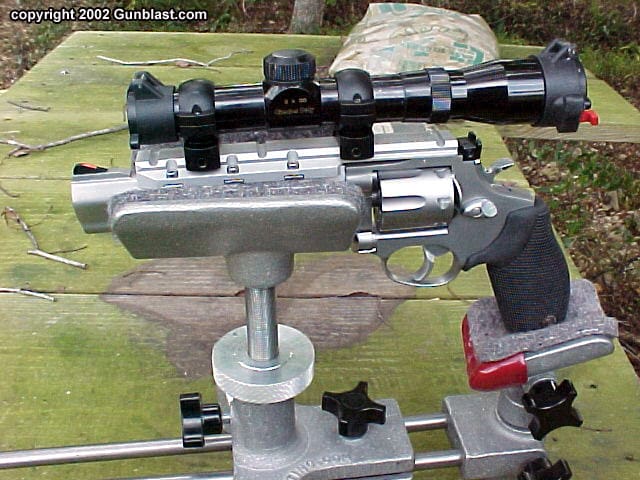
Pistols are capable of great accuracy, and using an optic to take advantage of that is entirely reasonable. Yes, it means the optic will not work properly with the pistol held at arm’s length, but again, there is zero legal requirement that a pistol be held and fired at arm’s length.
No, a pistol stabilizing brace does not prevent one from firing a pistol with one’s eye the correct distance from a rifle optic. Nor does it have to be shouldered to do so. Nor does it mean the user intended for the brace to function as a stock. It can still be handy in many other, perfectly legal ways.
I can fire a pistol one-handed with the optic whatever distance from my eye as I desire, with or without a brace. I can use a brace and fire with my arm bent rather than extended.
This guideline is also as vague and as ambiguous as the rest. Eye relief is measured in inches. If ATF wanted to be objective it would define a numerical minimum.
Peripheral Accessories. Installation of peripheral accessories commonly found on rifles or shotguns that may indicate that the firearm is not designed and intended to be held and fired with one hand. This includes, but is not limited to, the installation of bipods/monopods that improve the accuracy of heavy weapons designed and intended to be fired from the shoulder; or the inclusion of a magazine or drum that accepts so many cartridges that it increases the overall weight of the firearm to a degree that it is impractical to fire the weapon with one hand even with the assistance of a stabilizing brace.
Again here we go with the one-handed, arms extended garbage. No one shoots a pistol this way and no one has to. Just look at the pistols above. And below:
Pistols have shipped from the factory with accessories such as those described by ATF’s “peripheral accessories” guideline for decades without a peep from ATF. It wasn’t a problem for obvious reason. A bipod does not make a pistol a rifle. Shooting a pistol from a rested position does not magically make it a rifle. A heavy pistol is not a rifle.
Also, “objection, your honor! Vague and ambiguous.”
No single factor or combination of factors is necessarily dispositive, and FATD examines each weapon holistically on a case-by-case basis. Because of changes in design or configuration of a weapon or attachment, as well as future changes in technology, this list is not exhaustive and other factors may become relevant to a weapon’s classification.
Perfect. We’ll get right on top of complying with this impossible-to-follow guideline that is constantly changing and applies only on a case-by-case basis.
Apparently ATF simply “knows it when they sees it” when it comes to brace-equipped pistols, and we’ll find out upon our arrest whether or not we’ve violated their opinion du jour.
Perhaps you aren’t a fan of this “Objective Factors for Classifying Weapons with Stabilizing Braces” document? Leave a comment:
…ATF has decided to publish the proposed objective factors in the Federal Register for a brief comment period, given the public interest surrounding these issues. ATF will consider the comments it receives before finalizing this guidance.
Comment, contact the White House, and contact your representatives. More info on how to do all of that is HERE.



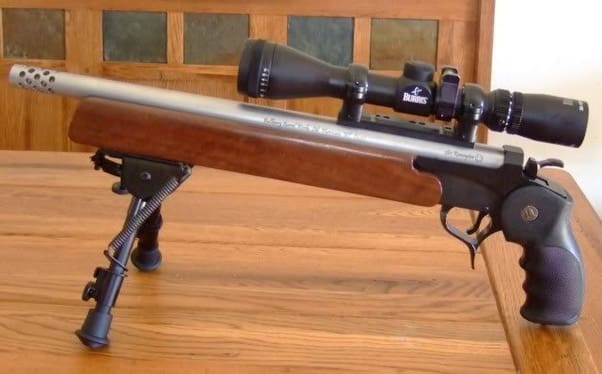
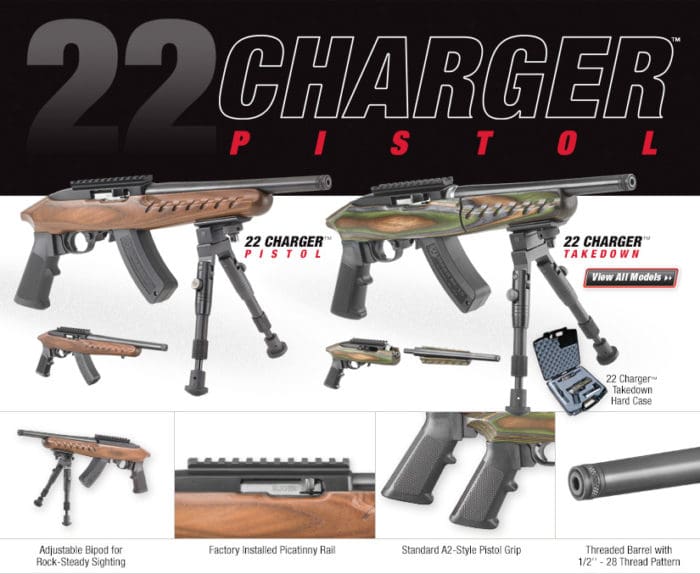



ATF does not classify unregulated components or accessories alone. public notice from December, 2018 in which it informed the nation of its brand new change in policy whereby it would, effective on that very date, no longer classify an accessory unless it is installed on a complete firearm?
How does this NOT negate the ongoing 80% w/parts kit “seizures”? They give you everything you need to beat them in court with their own words…
In “Court” is the purpose of the Long game attack on Rights. Deny the Right or make Citizens fear to exercise it. Use the fear of prosecution and crippling legal fees to deter the Right. Shopping from Court to Court to prolong the denial and fear. Federal, State and Judicial Bureaucracy has become the #1 enemy of “We the People” in terms of Our Freedoms and Rights. Using the very system We have been told We can trust to deny the people of their Rights. When a Citizenry fears the consequences of fighting for their Freedoms/Rights…More…Than they fear the loss of those Rights/Freedoms…They have become Subjects and allowed Tyranny to prevail. Keep Your Powder Dry.
Use the fear of prosecution and crippling legal fees to deter the Right. Shopping from Court to Court to prolong the denial and fear.
First of all I do not “fear” nor do I hold in “awe” the power of OUR Federal Government NOR is cost a factor as their are groups of lawyers around the country ready, willing and capable to take on an overreaching Government Pro Bono… Their court shopping does not play here, my suit, my court….
You like I don’t prescribe to what I wrote and yet 100’s of thousands of “We the People” do. All it takes is for a majority of POTG to bend to the fear for it to be effective. I’m at an age where the threat of a long jail sentence or even death is no longer a deterrent to what I do or how I act. Unfortunately We are few and far between. As long as the majority of POTG stand aside as their Rights are slowly and inexorability taken away. The action of the few who refuse to surrender will be of little consequence against the Tyranny of the State. Not since the Revolutionary War has it been more true: ” We Must Hang Together Or Surely We Shall Hang Separately” Benjamin Franklin
We Must Hang Together Or Surely We Shall Hang Separately
https://www.historycentral.com/Revolt/stories/Hang.html
I’m at an age where the threat of a long jail sentence or even death is no longer a deterrent to
Yep, got the T-SHIRT (2 actually) wear it proudly, makes the point with a USMC hat and the Molon Labe pin… Not to mention the ever so slight print of a G29 10mm inside the waistband EDC…
Long article. I think the ATF is wading in the waters a bit trying to justify banning large classes of existing guns without the messy business of congressional action. No one in government seems to question this rather Homer nods approvingly. It’s all going to end up with a ban on any gun that shoots more than one round per trigger pull without reloading or working an action. One step above muzzle loading. That right there is what the democrats are going for.
We could ask DJT to do something but a month from now JRB would just reverse it. So quit complaining about it. Abolition of the agency is a great step but it ain’t happening. One man can’t save us from such things.
That leaves the Big Court. Too bad they have no enforcement arm to make sure their decisions are followed. Even a heavy decision wiping all this away would be ignored. This isn’t gay marriage or abortion after all.
So in the end it’s the ATF against a few million people that own stuff they are trying to ban and make disappear. This isn’t going to go very well.
An enforcement arm? They don’t even have a spine. They’re not likely to issue any rulings that contradict the progressive world order anyway.
During war, soldiers are issued the same style rifle, regardless of their size. If you were a lefty, you made it work. The ATF now wants the firearm to fit the person without defining the rules. This is like the dress codes in jr. and sr. high school, a teacher might send Nancy to the office because of attire, but Sally(who was a quiet church mouse in class), was wearing tighter and shorter clothes. These rules are meant to punish those who those in power don’t like. If you criticize or have an adverse opinion, they find another rule in which to punish you.
Another problem here is the weapon that you bought in your 40s was fitted to you, but now that you are 65, maybe it is over the top(according the ATF). Here in Ca, we can’t have an adjustable stock. This keeps you from allowing others to try out and practice with your weapon. It seems that the powers that be want to make each weapon person specific, that way you turn them in a death…..
Whoever made the rip doggo captions deserves a raise
This!
👊 👍
Don’t even get me started onAR and AK style handguns(with or without a brace) since Ca doesn’t allow them at all.
Actually, yes CA does, though few LEOs even know this. Even my own LEO friends didn’t realize it until I explained it, and then they agreed.
CA has three criteria to classify a gun as an AW, all three of which must be met:
1) Centerfire
2) Semi-auto
3) Detachable magazine
Remove one of those, and your AR pistol suddenly becomes simply…a pistol. A KaliKey BCG makes it a single shot (bolt action). Done.
CA escapee here, so I’m sure you’re more up-to-date on the laws than I am. I agree that you listed the ways to avoid falling afoul of the AW ban, but doesn’t a pistol that isn’t on The Roster violate that law?
I assembled my own from an 80% receiver. To “comply” to the best of my abilities to CA’s myriad and constantly-evolving laws, the receiver was finished and marked before our Jul 1, 2018 cutoff date (to avoid CADOJ’s current requirement of declaring your receiver to them and begging for an assigned serial number – which they laughingly state is not registration). Next, and attorneys differ on their opinions about this, the upper was assembled to the lower with the inclusion of the KaliKey so as to make it a single-shot action.
You’re correct, however, that any sales of full-function AR pistols within CA are illegal.
As I’ve mentioned before, this is a delicate area because of the enormous burden on LE to know and properly enforce all the expanding laws on the books. There is no way any sworn officer can possibly be abreast of current laws and regs, so I never bring my AR pistol to the local range, but rather train with it when out in the desert, or when visiting neighboring NV or AZ. It remains as one of my SHTF guns.
With all the gun control lawsuits by FPC, SAF, CRPA, et al in the hopper right now, I can only hope that Sacramento will be slapped down and freedom will be allowed again soon.
I’ve happily purged my head of as much of their BS as possible, but ISTR the issue had something to do with the state having a different definition of “manufacture” (basically all making) from ATF (intent to distribute). I hope you’re right and wish you the best.
Great(!) article, and immediately one of the top five best and most important/relevant for me from TTAG for 2020. I’m going to bookmark this one and read it a few more times to absorb the excellent arguments.
Well done, Jeremy.
“Secondary Grip. The presence of a secondary grip may indicate that the weapon is not a “pistol” because it is not designed to be held and fired by one hand.”
The Savage 502 pistol features a forearm stock that can be held. Does this make it now illegal? A bolt action pistol no less.
I’m going to do what I do best. Piss people off. I know a couple of guys that have pistol braces on their very short barreled ARs. Never saw them fire them any other way than off the shoulder. The first time I saw a “brace” I thought “Looks like a stock to me, but if it gets him around the SBR regs so be it.” My friend was shooting it on a bright, sunny day. I could see the fire ball from 50′ away. He asked if I wanted to shoot it. I said, “No thanks. I don’t care for stun grenades going off in my face.” This might be the one time I’d prefer a pistol caliber carbine to a “handgun.”
There are muzzle brakes that stop that.
Montana, muzzle brakes? You’re kidding, right? They may help with recoil, but compound muzzle blast exponentially. I have a stainless Remington in 7mm magnum. It’s had some custom work done to it, including a Mag-Na-Port muzzle brake. I went to a Led Zepplin concert once. This rifle is a lot louder. On the plus side it stacks Swift Socorro 150 grains on top of each other. The muzzle brake was on the rifle when I bought it. I’d never install one. Anyone who can’t handle recoil should stick to air rifles.
when I’m shooting targets I get recoil, when Im shooting at a critter I dont feel it.
My Submission:
Greetings.
In regards to the above proposal, I wish to communicate that there is very little objectivity, and much subjectivity, in the guidance. For example:
Type and Caliber. The type and caliber of the firearm to which the stabilizing brace or similar item is installed. A large caliber firearm that is impractical to fire with one hand because of recoil or other factors, even with an arm brace, is likely to be considered a rifle or shotgun.
There is no *objective* definition of “impractical to fire with one hand”. A small or elderly person may find it difficult to handle a 19 oz auto loader chambered for 9MM, while a large man may be able to easily control a 53 oz revolver firing a .44 Magnum round. Nor is there an objective standard for “large” caliber. This “guidance”, therefore, would make illegal for a person of small stature what is perfectly allowable for an NFL lineman.
Also, for the most part, one-handed pistol shooting is not taught anymore (including by your own agency, and all other LE organizations.) Thus, it could be argued that it is impractical to fire *any* pistol one-handed.
A regulation with the status of a law as passed by Congress can NOT be so vague as to be unable to be *objectively* understood. “I can’t define it, but I know it when I see it” (Jacobellis v Ohio) is the phrase that comes to mind, and recall that Justice Potter was writing in concurrence of a decision finding FOR the Defendant, and against the Government. BATFE is here attempting to define a pistol brace as a stock. I recognize a stock when I see one; and a brace is not a stock.
Well said!
“Instead of adding braced pistols to the NFA, we should remove SBRs from it.” (… and ATF should help as we have now proved beyond reasonable doubt that SBRs and braced pistols are almost never involved in criminal activity.)
These sentences pretty much summarize my comments as submitted. I know this is way too much to ask, but why shouldn’t ATF be involved in removing regulation or lobbying to change laws that have been proven useless.
Nope, shouldn’t have to prove anything. The Right To Bear Arms,,,,(as long as they’re approved by),,, isnt in the 2A
A agency not falling under Constitutional authorization,issuing un Constitutional edicts further violating “We The Peoples Constitutional rights”,that Congress and said agency was strictly prohibited from those violations. Now just who are the scoff laws.
Part of what I said to my Congressman and two Senators (up for Georgia run off so who knows if they are paying any attention):
“No single factor or combination of factors is necessarily dispositive, and FATD examines each weapon holistically on a case-by-case basis.”
This is the single most horrific statement I have ever seen from a federal agency! they are essentially saying “we will know it when we see it” but pistols are not art, they are a physical item with real physical size, shape, and weight that anyone should be able to measure, yet in this document there are no specific, “objective factors” for determining when a pistol equipped with a stabilizing brace will be considered a short-barrel rifle. Further they appear to want to keep the ability to determine if a braced pistol is actually a short-barrel rifle a secret known only to ATF for the purpose of springing a felony got-ya on an unsuspecting company or citizen at their own discretion.
I said mostly the same thing in my comment and more.
13,021 comments as of noon yesterday. They are really trying to shaft us doing this over Christmas and New Years and with a very short time window for comments.
All of this over a brace? If you put that there brace on your Gun Big Brother is going to storm your home and carry you away like the KKK and Nazi SS did to Blacks and Jews.
The question for the ATF is do they want lower themselves the level of the KKK and nazis?
It makes as much sense as some jackass concerned over having power steering in a car. Why with that there power steering you could mow down pedestrians on one side of the street and turn around fast and mow the other side of the street down. If you take away the power steering from law abiding citizens then criminals will stay on one side of the street and U turns will be harder. So all you drivers with power steering you have 30 days to remove it or jack booted thugs will storm your garage and remove it for you. C’mon man.
Webleys have always been ugly, but have never thought of them as suicide specials.
Why are they even taking into consideration how an AR upper is configured? ITS NOT A FIREARM. The lower receiver is the firearm so it doesn’t matter what scope I have or how it set up.
The name of the agency is Bureau of Alcohol, Tobacco Firearms and Explosives abbreviated BATFE. Regarding the agencies responsibilities/activities involving Alcohol, Tobacco and Explosives, these seems little problem. Correct me if I’m in error here. How different the story is regarding Firearms. It strikes me that respecting firearms enforcement and regulation, the agency is, putting it politely, A Basket Case, one suffering from serous personality disorders such as would make psychiatric counseling more than simply appropriate.
A former acquaintance with whom I’ve lost contact, I believe headed the Pittsburgh office of the BATFE, or stood high in the pecking order there, offered the following. If the agency weren’t involved with firearms regulation, at least 90% of the people complaining about it’s activities would hardly notice it’s existence. My acquaintance also bestowed a title on me. PIC, which stood for Perpetually Irate Citizen re my criticisms of the agency. I never disputed the characterization.
Of course, one recognizes that while the AFT writes regulations, some of which might be charitably described as Bureaucratic Double Talk, Congress writes the law, much of which raises serious question concerning Congress’s understanding of and respect for The Constitution. My title was and remains PIC
A correction on the Tailhook Mod 2: It is not interchangeable with stock components, other than the endplate and castle nut. It is adjustable and comes with its own unique buffer tube. That said, I don’t see any reason a brace couldn’t be made to utilize a standard 6-position buffer tube as long as maximum pull length rrequirements were met.
it appears psa has stopped selling complete pistol lowers
theyre not just out of stock
theyre not even listed as an available item to purchase
Dont know about all that, but hey the revolver pictured in the articles heading should be issued to all BATFE agents.
Convention of states can get rid of this left wing subversive agency!
they should simply stop regulating SBR’s….and I told them so….
Convention of states can get rid of this left wing subversive agency!
Explain…. Convention of States is a Constitution Referendum… The BATFE is a Congressional “brainchild” bureaucracy NOT created by the Constitution… And what they do is called regulation, anything they want to give the weight of law to must be approved by heir masters (Congress) who is the REAL villain in this picture…
The BATFE whoever you think you are. You have no foundation in even using crime data driven decisions. You are attacking law abiding gunowners who happen to like cutting edge stuff like a guy buying the next new motorcycle or kayak, or what ever the hell he or she wants. You have no foundation in theory as the second amendment is quite simple and quite clear, and all of the discussions regarding the second amendment is available for you and me to read. We will both come to the same conclusions as rational men and women. The Founders wanted to ensure that if their worst fears came to fruition and our government became so corrupt as it began removing free speech, removing the right to back it up with arms God forbid that time! So at least render a do no harm approach to us law abiding gun owners, train with your cool stuff, we’ll train and have fun with our cool stuff, and the world and America’s heartbeat is safe!
Jeremy,
You’ve done great work on this and your previous call to action article. It will help so much with our comments on the ‘guidance’. I just want to thank you for the thorough fact checking.
This is an outstanding analysis. Well done.
I need a cane to stand, I used a pistol brace as intended when shooting offhand but I use it the alternate way when shooting from a rest or bench. They have been invaluable to me as a disabled shooter and now they are going to take them away over cosmetics?
On what planet is this not a violation of my rights under ADA?
Please folks – DO THIS TODAY! Even if it is just a few sentences. We ALL need to fight this BEFORE it becomes law!
Comments are closed.